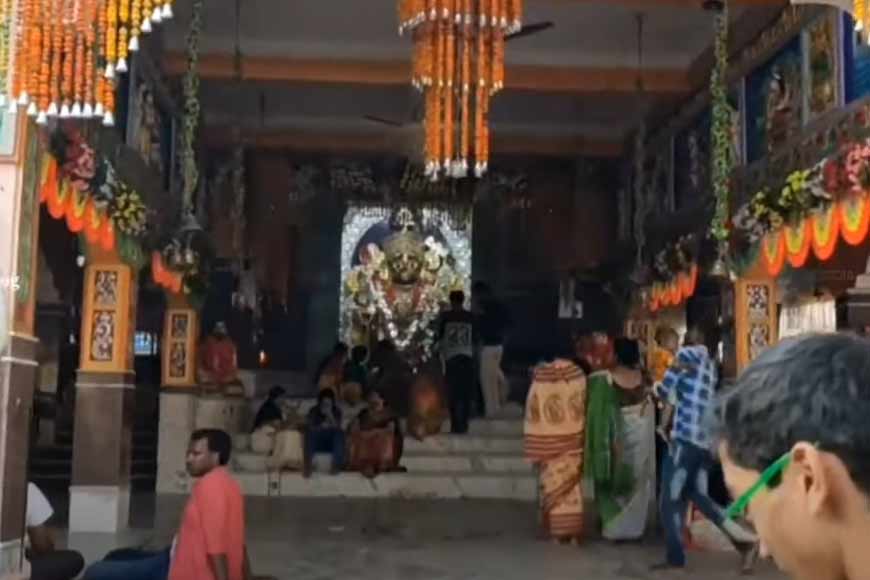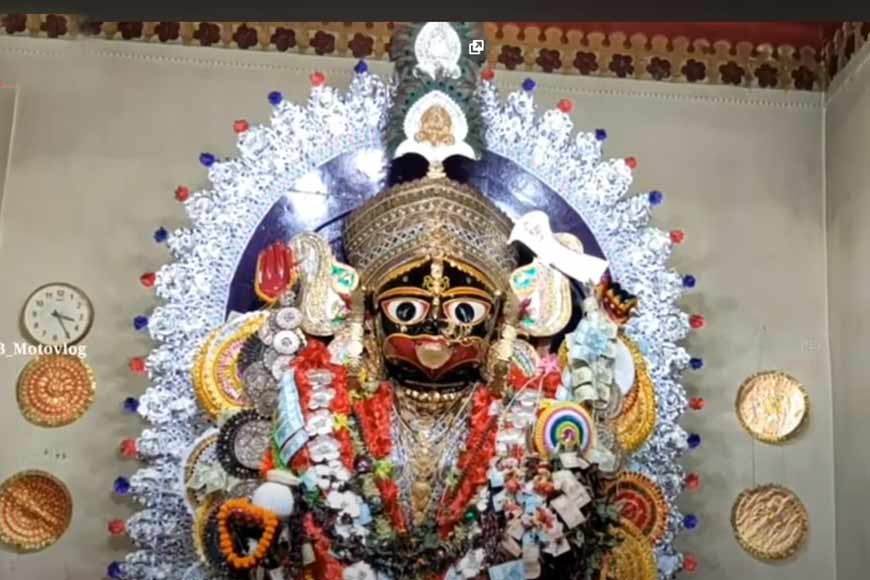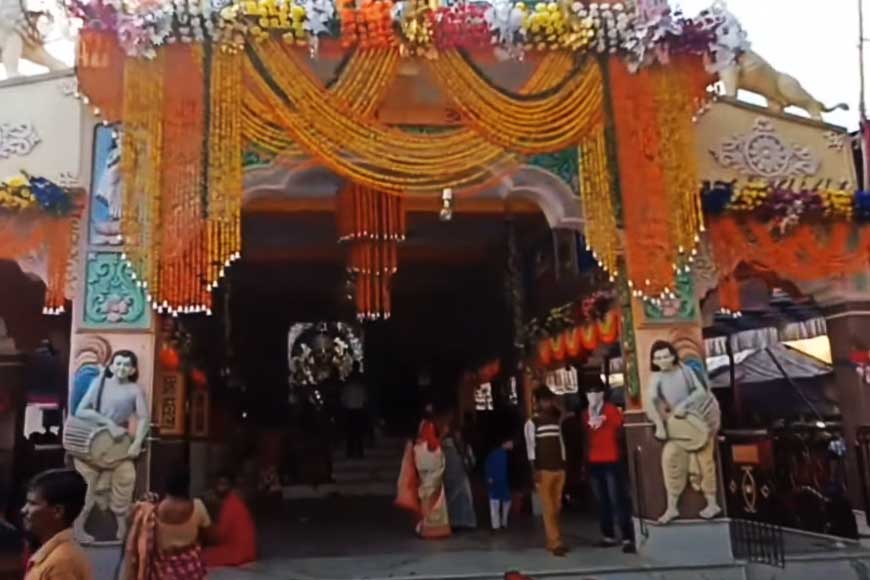Legend behind Ma-i-toh Kali Temple of Sonamukhi - GetBengal story

Ma-i-toh Kali Temple, Sonamukhi, Bankura
Bengal is the Kali devotees’ ultimate pilgrimage. There is a widely held belief among Bengalis that the noted 16th century Tantric scholar, Krishnananda Agamavagisha had once dreamt of Goddess Kali, the goddess, who was until then, associated with death and darkness. She dictated Agamavagisha to worship her in a form that incorporated in her forms of feminine domesticity. Agamavagisha is attributed with popularizing the worship of a certain image of Kali in Bengal and is also believed to have started the oldest https://www.getbengal.com/details/kali-and-bengals-legendary-dacoits-an-everlasting-bond in the region. Later, the rich landlords continued the tradition and turned them into ostentatious projects to showcase wealth and power and now, when the rest of the country celebrates Diwali, it is Kali puja that is observed and celebrated with much pomp and pride in Bengal.
There are countless Kali temples and Kali fables scattered across the land. These myths transport both the believers and agnostics into a magical world where one distances oneself from one’s own scientific consciousness and soaks in the beauty of the stories of miracles that one otherwise refuses to believe. Kali is a very popular deity in Bengal and the annual puja is celebrated with great fanfare in the month of Kartik (late October or early November, according to Gregorian calendar). Venues for the event galore from pooja mandaps (temple porch) with mythical lores associated with the event, bonedi barir pooja (puja held at the houses of the wealthy aristocrats and families belonging to the upper echelons of society), temple pooja to barwari pooja (community puja) - Bengal has it all. The mythical origin of the goddess is shrouded in mystery, there are many folklores surrounding Kali puja, and one such puja is held at Sonamukhi in Bankura district.

Sonamukhi is an ancient settlement of Bankura and is renowned for its five-day-long festivities during Kali pujo. The town is renowned as ‘Kalikshetra’ (the premise of Goddess Kali) and several Kali pujos are held here including the famous 'Ma-i-toh Kali' (Mother is only Goddess Kali). Devotees believe in the supernatural powers of this deity and people from far away gather in the temple to offer prayers to 'Ma-i-toh Kali'. However, why is the name of the deity so strange? There is an ancient myth behind such naming. Prior to that, let us leaf through the pages of history.
Also read : Moida Kali! Well, she is not made of flour
Children in Bengal are familiar with a very popular centuries’ old lullaby often sung by grandmas to put babies to sleep. The limerick expresses the fear and apprehension of Bengal’s farmers facing consequences if they fail to pay their ‘khajna’ (taxes) to the ‘Bargis’ (Maratha invaders) on time due to natural calamities or poor crops. The poem goes thus:
Chhele ghumalo, paada judaalo bargi elo deshe
Bulbulite dhaan kheyechhe, khaajna debo kishe?
Dhaan phurolo, paan phurolo, khaajnar upaye ki?
Aar kotaa din shobur koro, roshoon boonechhi
(As the children fall asleep, silence sets in, the Bargis (Maratha sepoys) come to our country. The red-whiskered robins (Bulbuli) have eaten the grain, how shall I pay the tax (to the Bargi)? All our food and drink is over, how shall I pay the tax? Wait for a few days I have sown garlic)
So great was the terror of the Bargi that, mothers would use the fear of a Maratha raid to get their children to go to sleep. It was in 1741 that the first Maratha invasion of Bengal took place. The cavalry of Raghoji Bhosle, the Maratha ruler of Nagpur, started to pillage western Bengal under the command of Bhaskar Pandit. Bengalis called these Marathas “Bargis,” a word derived from the Marathi "bargir" (etymology: Persian) which means “light cavalry”. During the course of the next decade, the Maratha army plundered Bengal, causing great human hardship as well as economic privation. There was not any area that was spared by the Bargis.
In 1742 (1149, according to Bengali almanac) a large Bargi cavalry, led by Bhaskar Pandit, attacked Sonamukhi across Bishnupur. Panic gripped the entire area. Residents were trapped or practically lived under house arrest. It is said that one evening, Bargi commander Bhaskar Pandit stood in front of a decrepit cottage in Sonamukhi. An old man sat in front of the bonfire. Bhaskar Pandit took out his sword from the saber and lifted it up to kill the man. But, lo Behlod! He felt someone pulling his sword from behind. Pandit was livid and turned around to see the offender but could not see anyone. He asked his men to identify the culprit but they all insisted there was no one around to obstruct him. Bhaskar Pandit tried hard but he could not bring down his hand that held the sword and then suddenly, within seconds, he lost his vision completely.

Bhaskar Pandit was now in awe of the place and asked the priest if the cottage had any idol inside. The priest affirmed. Realizing Goddess Kali was orchestrating all this, Bhaskar Pandit was terrified. The old priest felt sorry and prayed to Kali, seeking forgiveness on behalf of Bhaskar Pandit. Satisfied by their devotion, Goddess Kali restored the Bargi chieftain’s vision. After witnessing the miracle, Bhaskar Pandit and his band of brigands left chanting, 'Ma-i-toh Kali'. According to legend, before leaving the place, Bhaskar Pandit handed over his weapon to the old man. Gradually the name gained popularity and the Kali idol in the temple came to be known as 'Ma-i-toh Kali'.
At present, 'Ma-i-toh Kali' puja is hosted by the Banerjee family at their ancestral home/temple. With the passage of time, that dilapidated hut has been transformed into a large temple complex. People from all walks of life throng here to get a view of the goddess and offer prayers. During the annual Kali Puja held in the month of Kartick, special worship of the goddess is organized for five days at a stretch.











